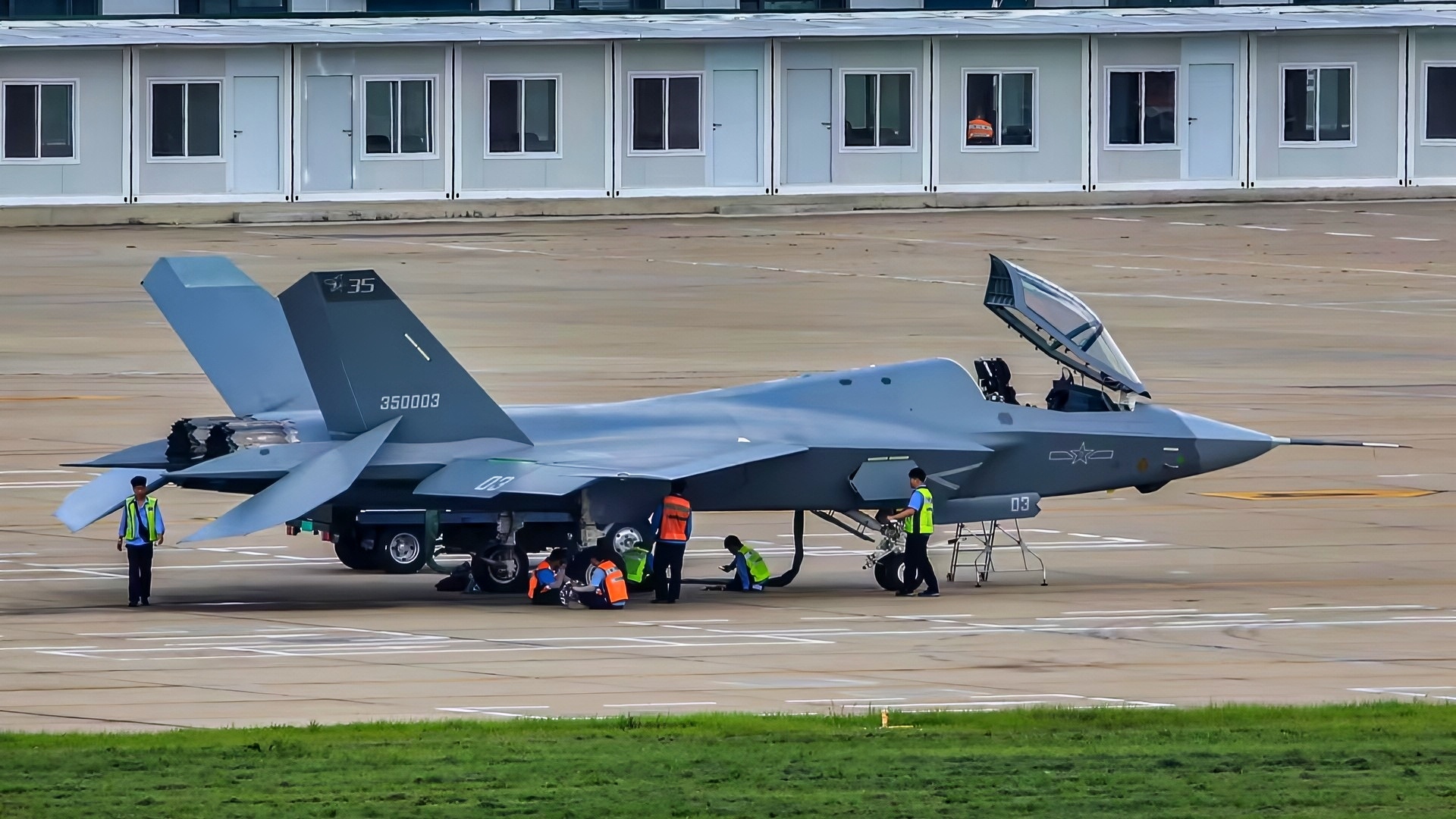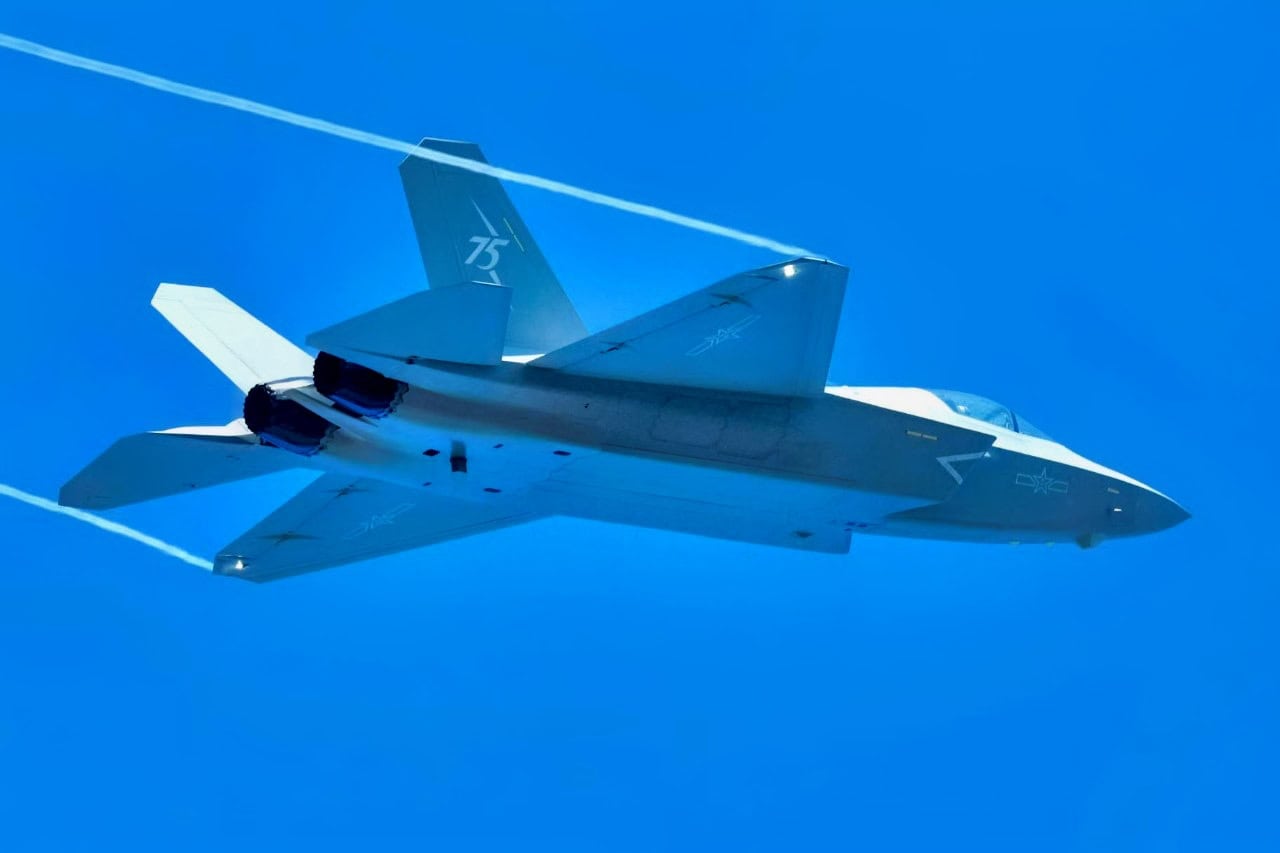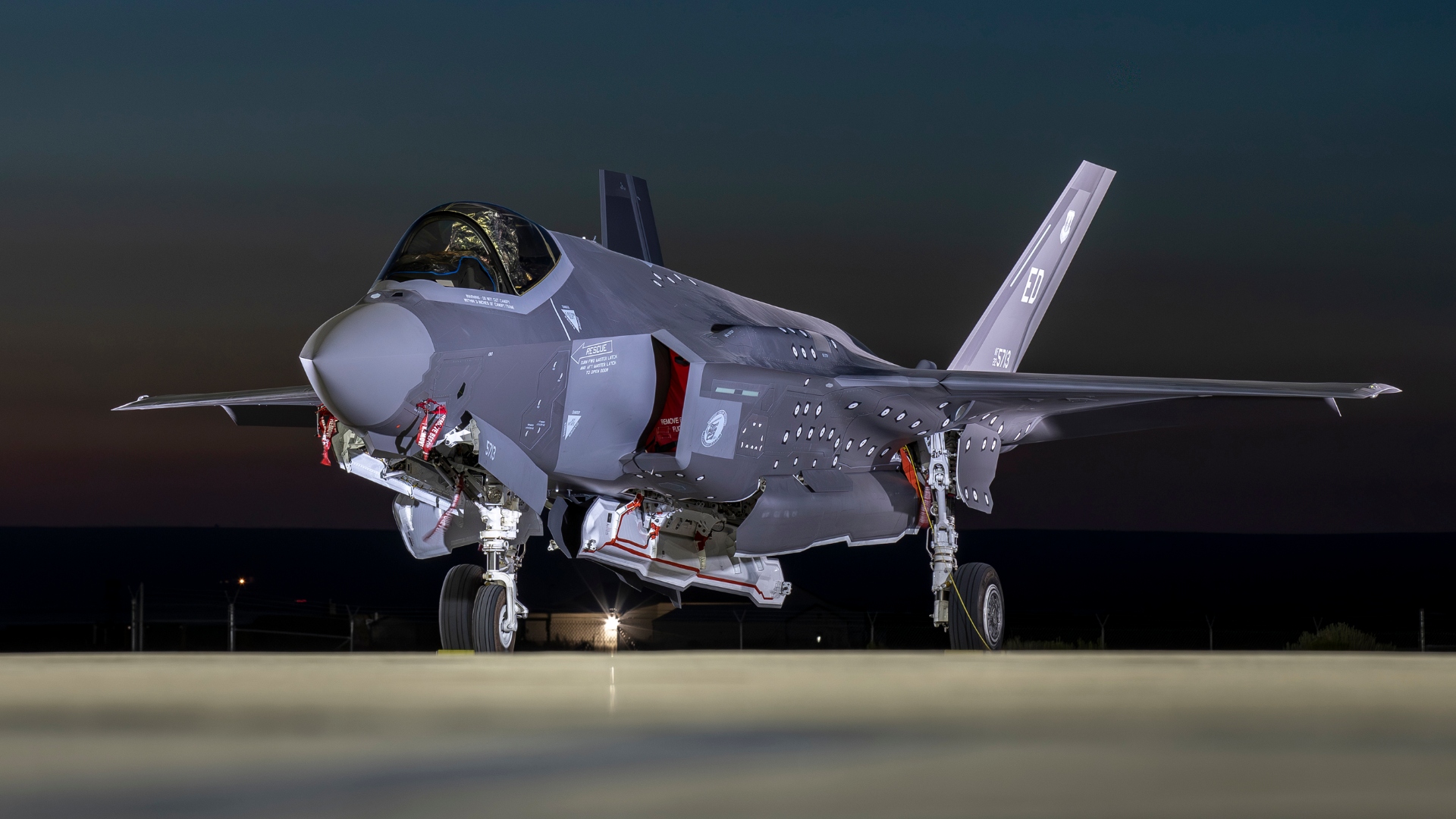Key Points and Summary – China’s second stealth fighter, the J-35, is plagued by five significant problems despite Beijing’s claims it rivals the F-35.
-Its engines, particularly the developmental WS-19, suffer from reliability and performance issues.

J-35 New Stealth Fighter from China

China J-35 Fighter on Runway. Image Credit: PLAAF.
-Its avionics and crucial sensor fusion capabilities are likely inferior to Western counterparts.
-The J-35’s stealth is questionable due to its twin engines and potentially lower-quality materials.
-Having only recently entered service in limited numbers, it lacks operational maturity and has zero combat experience.
-Finally, its export prospects are poor, with potential buyers like Saudi Arabia reportedly rejecting it over performance concerns.
The J-35 Stealth Fighter Problems
The Shenyang J-35 the second fifth-generation stealth fighter to enter service in the Chinese military.
Chinese sources hail the aircraft as one of the most advanced fighters ever created, able to rival the American F-35. Despite these lofty claims, many questions remain about the aircraft’s capabilities.
Given the small amounts of public information, here are five of the most significant problems the J-35 has.
Engine Problems
The first and arguably most critical issue is the aircraft’s engine performance and reliability.
The earliest prototypes of the aircraft originally flew with Russian RD-93 engines, which were not powerful enough for the airframe, especially for carrier-based operations that require high thrust for catapult launches and arrested landings.
China later introduced its own WS-13 engine, and more recently, the WS-19, which is intended to be a more capable powerplant.
However, the WS-19 is still in the early stages of development and deployment.
According to Chinese sources, these engines can supercruise, but no confirmation of these claims has yet to be confirmed.
These problems are not just technical but strategic, as they directly impact the aircraft’s ability to perform in demanding operational environments.
The lack of a reliable, high-thrust engine has also affected the J-35’s export potential.
For instance, Saudi Arabia reportedly declined to purchase the J-35A due partly to concerns over engine reliability, among other performance issues.

J-35 Fighter. Image Credit: Chinese State Media.
Inferior Avionics
The second major problem lies in the aircraft’s avionics and sensor fusion capabilities.
While China claims the J-35 is equipped with an advanced AESA radar and electronic warfare systems, there is little independent verification of their effectiveness.
Western analysts remain skeptical about the quality of integration and the level of data fusion these systems can achieve. The F-35, by contrast, is renowned for its seamless sensor fusion, which provides pilots with unparalleled situational awareness through systems like the Distributed Aperture System (DAS).
Although the J-35 may have benefited from cyber-espionage targeting F-35 development data, replicating the hardware and software integration of such systems is far more complex than simply copying blueprints.
As a result, the J-35’s avionics may look similar on paper but lack their Western counterparts’ maturity, reliability, and combat-proven performance.
This technological gap significantly undermines the aircraft’s effectiveness in modern network-centric warfare.
Inferior Stealth Characteristics
Little research has been done on the J-35’s stealth capabilities. Stealth is the defining characteristic of fifth-generation fighters.
While the J-35 incorporates stealth shaping and radar-absorbent materials (RAM), its actual RCS is believed to be significantly higher than that of the F-35.
One contributing factor is the J-35’s twin-engine configuration, which increases its infrared and radar signature, especially from the rear.
China’s RAM technology is not yet on par with U.S. standards.

The 461st FLTS, F-35 Integrated Test Force, at Edwards Air Force Base in California received a newly instrumented F-35A aircraft. The unique airframe will boost flight and mission sciences testing for the warfighter at a critical time during developmental test. “This new aircraft arrives at a crucial time, supporting intensive testing of TR-3 software upgrades and next-generation weapons integration.” says Lt. Col. Daniel Prudhomme, F-35 ITF director. “As the world’s only F-35A capable of evaluating both mission systems and flight sciences, this new asset is key for rapidly fielding advanced capabilities to the warfighter.” (Courtesy photo)
The effectiveness and durability of these materials under operational conditions remain questionable. Furthermore, the modifications required for carrier operations, such as folding wings, reinforced landing gear, and catapult launch mechanisms, introduce additional radar-reflective surfaces, which might compromise its stealth profile. W
hile it is likely not as stealthy as the F-22 or the F-35, the J-35, on paper, implements sophisticated stealth technology that reduces its RCS significantly. Again, there is currently a lack of research on this topic to draw definitive conclusions.
Available Only in Small Numbers
The fourth problem is the aircraft’s limited operational readiness and lack of combat maturity.
The aircraft was accepted into service earlier in 2025, so it is unrealistic to expect the plane to be available in large quantities.
That said, only a few units have been delivered to the PLA Navy and Air Force, which are still undergoing testing and integration.
Unlike the F-35, which has been deployed in multiple theaters and integrated into multinational exercises, the J-35 has no combat record and remains untested in real-world scenarios.
This lack of operational experience raises questions about its reliability, maintainability, and performance under combat conditions.
Earlier, China demonstrated footage of the J-35 partaking in carrier operations. This is the first time that the aircraft has been seen in such an environment.
This suggests that the J-35 has successfully been integrated into the PLAN and is fully compatible with China’s Type 003 Fujian aircraft carrier.
An Export Aircraft with No Customers
Finally, the J-35 faces significant challenges regarding export viability and strategic trust. China has aggressively marketed the J-35 to international buyers, but interest has been limited, and some potential deals have fallen through.
Pakistan, once expected to be the first export customer, reportedly backed out of a deal to acquire 40 J-35s.
According to the country’s Defense Minister, no such deal ever existed, and claims of such only existed in the media.
Similarly, Saudi Arabia rejected the J-35A due to concerns over its stealth, engine, radar, and avionics, opting instead to pursue sixth-generation fighter collaborations with Western nations.

J-35A Fighter at Le Bourget Air Show. Image Credit: Author/National Security Journal.
The J-35 is marketed as a low-cost stealth fighter for nations that cannot afford to acquire the F-3,5 but let’s take a closer look at this claim.
Estimates vary on the J-35’s cost, with some sources claiming $55 million per unit and others reporting around $80 million per unit.
If the higher figures are accurate, the J-35 is only marginally less expensive than the F-35A, which is around $82 million per unit.
The naval variant is likely more expensive. We cannot honestly know the price of the jet until its first customer places an order, but that might take a while.
About the Author: Isaac Seitz
Isaac Seitz, a Defense Columnist, graduated from Patrick Henry College’s Strategic Intelligence and National Security program. He has also studied Russian at Middlebury Language Schools and has worked as an intelligence Analyst in the private sector.
More Military
No Fix’: China’s J-20 Stealth Fighter Has 1 Problem With No Solution
The Army’s ‘Super’ MBT-70 Tank Summed Up in 1 Word
Shinano: Japan’s ‘Super’ Aircraft Carrier Was the Biggest Warship Ever Sunk by A Submarine
Russia’s ‘New’ Tu-160M Blackjack Bomber Has A Mach 2 Message for the U.S. Air Force










